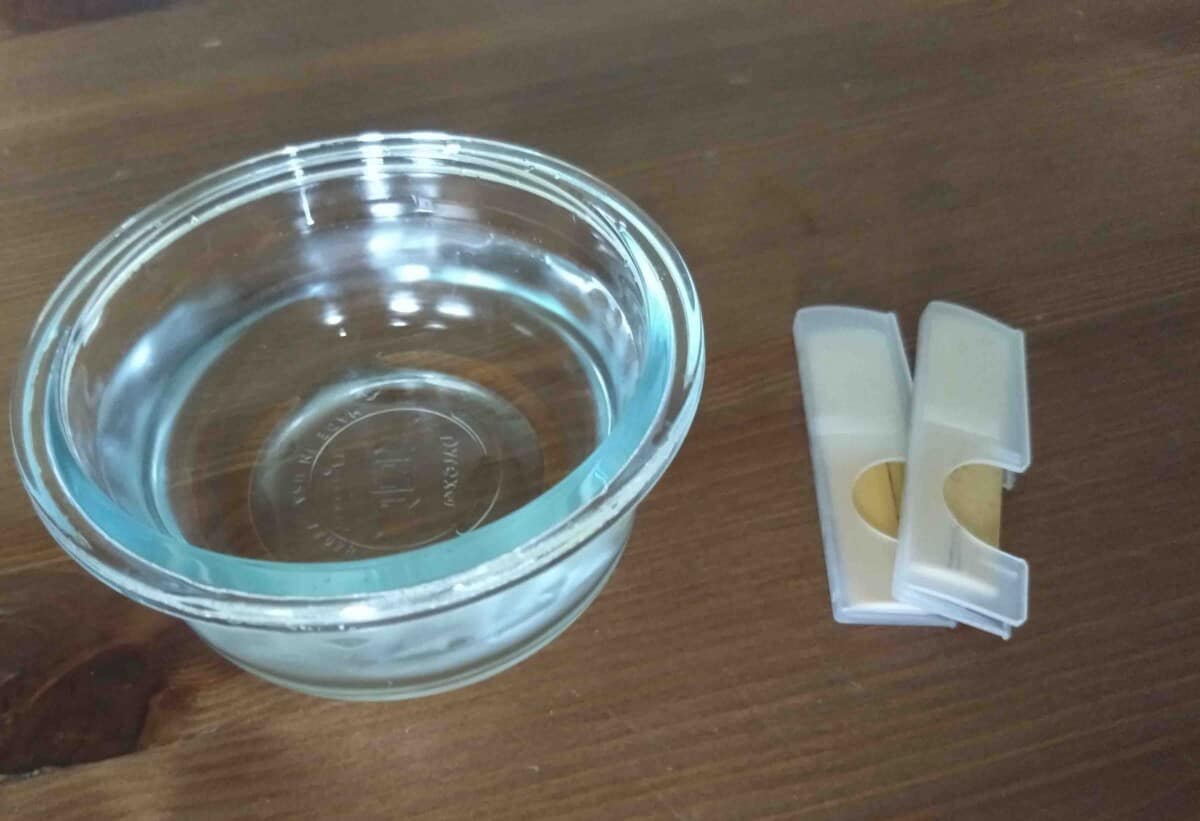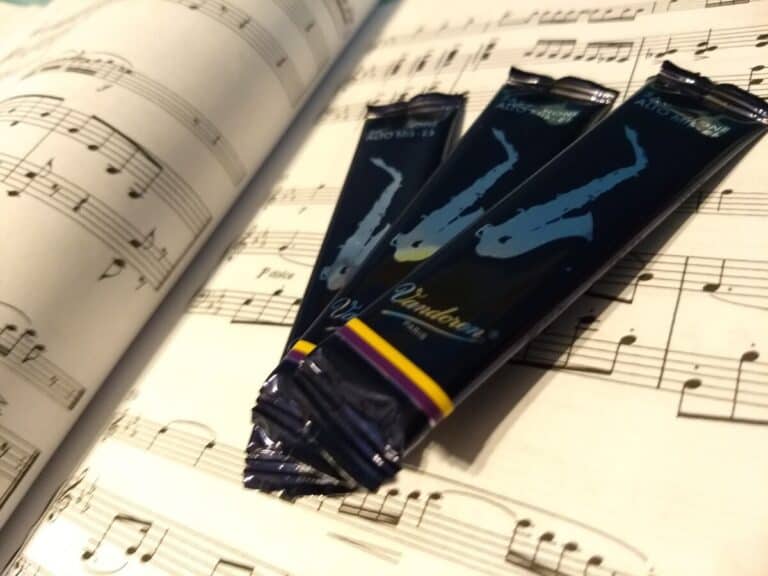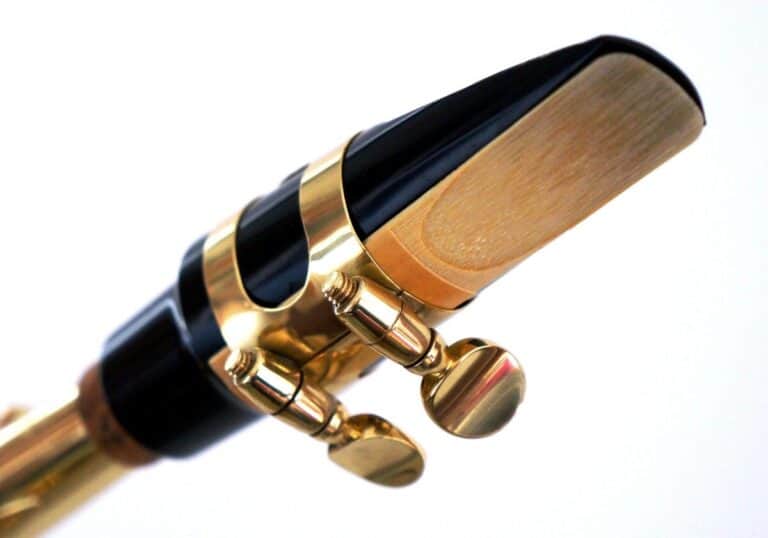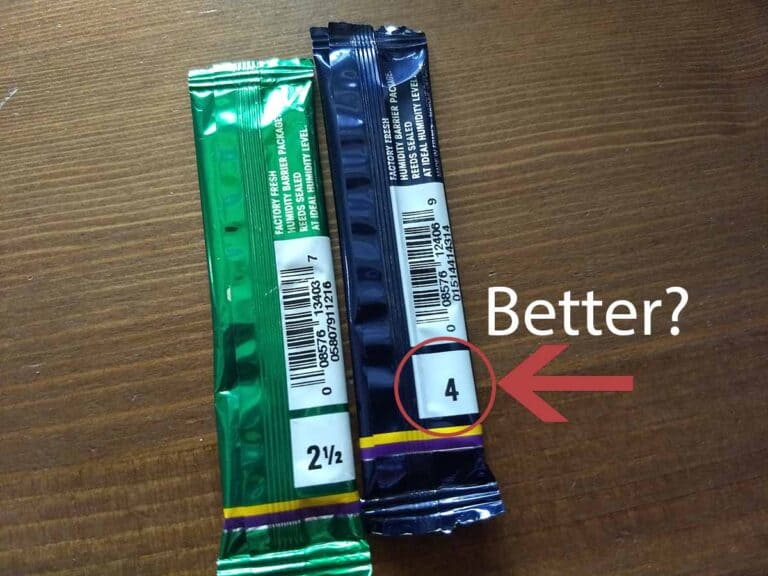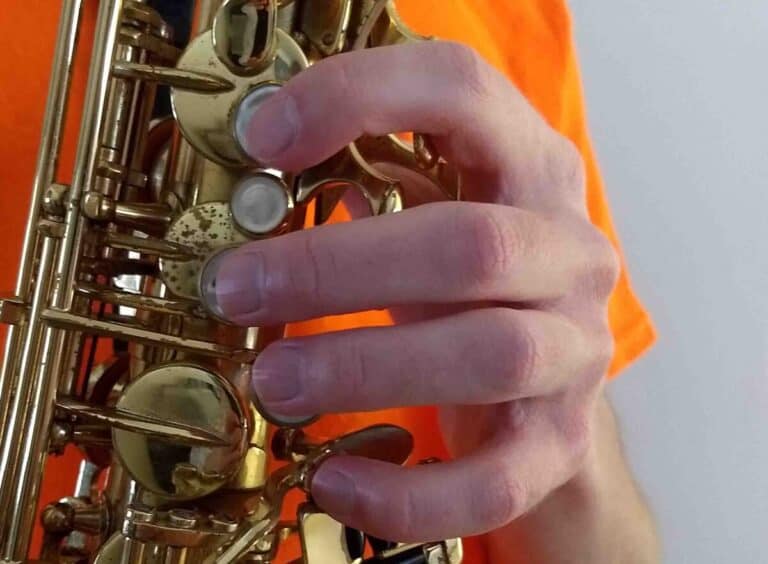How Long Should You Soak Saxophone Reeds?
The question of how long to soak reeds is one which I imagine every saxophonist asks and second-guesses themselves on at some point. I’ve personally experimented with a lot of different soaking methods, so I’m here to offer my own input on the subject.
You should soak your reeds for about one minute with saliva. This ensures that the reed is moist enough to play well without being so wet that it becomes waterlogged. If the reed is brand new, you may want to soak it more thoroughly with water for about twenty minutes before working with it.
I’ll explain the exact method and the reasoning behind it in the remainder of this article.
The method
To soak your reeds:
- Put the thicker portion (back) of the reed into your mouth.
- Continue this for about one minute.
- Lick both sides of the thinner part (tip) of the reed.
I find that this process gets the reed sufficiently wet while also not risking damage to the tip. One issue that I have with putting the reed in my mouth tip-first is that the tip can sometimes become damaged or warped this way. Soaking it from the back allows the moisture to flow from the back to the front, and in my opinion does a better job of getting the reed wet.
Also, note that this only applies to cane reeds. You do not need to wet plastic reeds at all, though it is fine if you choose to.
Furthermore, I only use this method if I’m using a reed that I’ve played on before. If the reed is brand new, then it needs a more thorough process to break it in which I believe should involve soaking it for a longer duration (and using water instead of saliva).
Why I soak my reeds for one minute
Cane reeds tend to function best when they are wet. When they are dry, they don’t respond well and tend to squeak. So, reeds clearly need to be wet to some extent; the only question is how much.
The reason that I choose to soak my reeds for about one minute is to get them wet enough to play well without risking the possibility that they become warped or waterlogged. Before I can explain why this is a significant problem, you first have to understand what warping and waterlogging are and what they do to reeds.
Waterlogged reeds
Reeds become waterlogged when they are fully (or almost fully) saturated with moisture. One tell that a reed is waterlogged is when you can see through the tip.
When a reed becomes waterlogged, the tone quality that it plays with becomes distorted. Additionally, waterlogged reeds tend to be less responsive in both the upper and lower registers. So, waterlogging in reeds tends to be a problem that is best avoided (except when initially breaking in reeds, which is a topic I’ll discuss later).
Reeds generally become wetter as they are played. So, while it is typical to wet a reed initially (before playing it), it will absorb even more moisture from your saliva and the condensation of your breath. If you wet a reed too much before playing it, therefore, then it may suddenly become waterlogged as you are playing it.
If you’re in the middle of a performance, this can be an especially large problem. Generally, you’ll use a reed for a performance while having a clear idea of how that reed typically performs. If the reed drastically changes in its tone quality and responsiveness as you are performing, that might throw you a bit off-kilter.
Additionally, reeds tend to become warped when they dry out too quickly. If a reed is soaked to the point that it is waterlogged, there is a high probability that it will warp as it dries. In fact, waterlogging is probably the main cause of reeds becoming warped. Speaking of which…
Warped reeds
A reed is said to be warped when the tip is no longer straight. If you look at the tip of a warped reed, you should see waves, whereas on a normal reed you should see a straight line.
When a reed is warped, it has many of the same problems that it would have if it were waterlogged. It is less responsive and tends to sound worse overall. If you have a reed that is warped, you can count on it performing poorly even if it had previously been a good reed.
There is only one way that I know of to get rid of warping. Specifically, you should soak the reed until it is fully waterlogged, then let it dry out on a piece of glass. This may seem like a strange procedure, given that I just told you that waterlogging is often the cause of warping. In actuality, moisture is what allows the reed to change shape, so it makes sense that the cause of the problem is also the solution.
The glass simply ensures that the reed does not warp as it dries out. If you have a reed that is waterlogged, you should always let it dry out on glass (a ridged surface works as well) so that it does not become warped.
So why one minute?
Quite simply, I soak my reeds for one minute because I need them to work consistently. If I am in a rehearsal or performance (or even if I am just practicing), I don’t typically have the time to deal with a reed that changes suddenly due to waterlogging. I suspect this is the case for most saxophonists, and as such I recommend others to follow a similar procedure.
Likewise, if the reeds become warped, there may not be time to let them dry out on a piece of glass or a ridged surface. This can be handled to some extent by using a reed case that has a ridged surface (which I highly recommend), but typically those reed cases also aim to control their internal humidity, and as such do not fully allow the reeds to dry out. This means that if reeds become waterlogged and are stored in a specialized reed case, they may have difficulty getting rid of the excess moisture.
Given all this, I find it much easier to soak a reed just enough for it to play well (that is, one minute) without going any further. This allows me to generally avoid the inconveniences of waterlogging and warping.
Again, this only applies if I’ve played on the reed before. There is a different procedure for breaking in a new reed, which I describe in the next section.
If you are breaking in a new reed
There are a few things I recommend doing if you are playing on a reed for the first time. Before doing anything else with it, you may want to consider closing the pores of the reed if you typically have the issue of a spitty sound. This essentially involves rubbing the reed against a sheet of normal paper (not sandpaper) before playing it for the first time. I describe this issue in more detail here.
Also, I recommend soaking the reed in water for about twenty minutes if it is brand new. This may, again, seem strange given that I normally recommend only soaking it for one minute with saliva. There are two main reasons for this.
First, breaking in reeds is a process that normally happens over the course of a few days, and it is something you should set aside time for. In other words, you shouldn’t be under the same kind of time constraints that you might be in during a rehearsal or performance.
Second, soaking it initially causes the fibers to expand and contract, getting it into a state that makes it easier to play on. Many new reeds are too hard to play well on initially, and soaking them helps get them to a state where they play more like a reed that has already been broken in.
This is not to say that you should treat them as if they are fully broken in after soaking them; you should still only play on them a little bit for the first few days that you use them. However, soaking them is an important first step.
Don’t forget to let them dry out on glass or a ridged surface after soaking them. Obviously, you still want to avoid letting the reed warp, even if in this case you are deliberately causing it to become waterlogged.
Why I soak my reeds with saliva
The other relevant question aside from how long you should soak your reeds is what you should soak them in. Most saxophonists will use either water or saliva; saliva is useful for gradually softening the reed, whereas water will have less of an effect in this regard.
A few saxophonists will even use alcohol (especially vodka), most likely to disinfect the reed before they use it. As I have never tried this method, I cannot speak to it.
I personally soak my reeds in saliva provided that I am not breaking the reeds in for the first time. The enzymes in our saliva slowly soften reeds in a way that allows them to maintain their quality of sound and responsiveness. Most reeds that you will play on will start out being harder than you are comfortable with – I find that using saliva helps gradually get them to a spot which is more preferable.
Obviously, you don’t want to soften the reed entirely. However, I find that soaking reeds in saliva typically has a subtle and gradual effect. It isn’t the sort of thing that will destroy reeds, so I find it to be preferable.
Another option
While I of course strongly advocate soaking your reeds for one minute with saliva, this is not necessarily the only option. Some saxophonists will soak their reeds for several minutes, hours, or even days in containers of water.
This works to some extent – the reed basically always be waterlogged, so at least you won’t have to deal with the read suddenly becoming waterlogged or with it suddenly drying out.
The issue that I take with this technique is that I find my reeds play poorly when they are waterlogged. However, some saxophonists actually prefer for their reeds to be waterlogged.
If you would like, you can try both methods. I recommend mine (again, soak for one minute with saliva) because I find it genuinely unlikely that someone can sound good with perpetually waterlogged reeds, but to each their own.
Conclusion
The question of how long to soak your reeds is, admittedly, one which is highly subjective. I hope, at the very least, that you will give my method a shot and see if it works for you. If it does, then you can consider your question answered. If not, then I am sorry for misleading you.
In any case, I hope you find a method of soaking reeds which is to your satisfaction.

